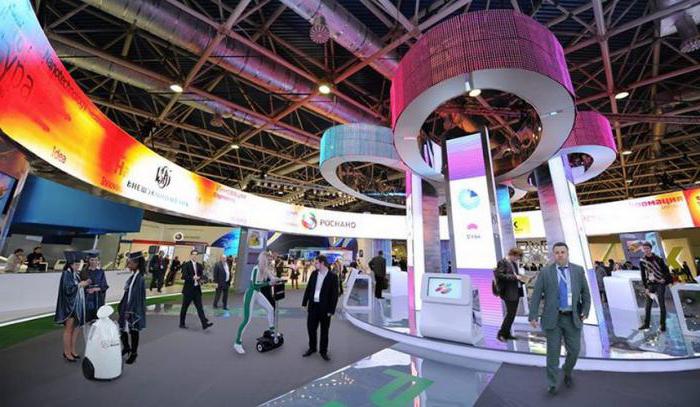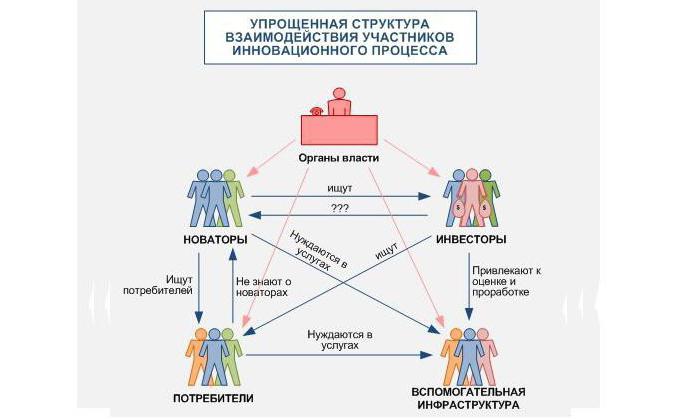The development of innovations in Russia is the principal position of the country's leadership. This is one of the few ways to get out of the shadow of the raw material model of the economy, reducing the dependence on the pricing environment for natural resources. Without increasing the high technology intensity of production, introducing more effective management models, and producing unique products, the state will not be able to become one of the locomotives of the global economy.

A look into the future
In Russia, innovative technologies are developing steadily, but noticeably slower than leaders in advanced development. Given the importance of the problem, the government has initiated a medium-term development concept known as Strategy 2020. In particular, it spells out scenarios for the implementation of innovative projects.

At the same time, the Russian Federation is closely cooperating with partners from abroad who have useful experience that allows them to introduce innovations in the Russian economy, science, ecology, and production. In particular, the project of cooperation with the European Union, known as the “Horizon 2020”, is highlighted. Perhaps this is the largest such program with a budget of 80 billion euros.
Today's Achievements
Annually, projects of various scales are implemented: from large (science cities, Skolkovo innovation center, technology parks) to local (based on unique production facilities, research institutes, universities). Since the beginning of the 90s, more than 1,000 innovative infrastructure facilities have been created across the country, including:
- 5 special technology-innovative economic zones;
- 16 testing laboratories, certification centers and other specialized facilities;
- 10 nanocenters;
- 200 business incubators;
- 29 centers of information and consulting infrastructure;
- 160 technology parks;
- 13 prototyping centers;
- 9 territorial innovation clusters;
- more than 50 engineering centers;
- 114 technology transfer facilities;
- 300 centers for collective use.

Innovations are being introduced in Russia, ensuring the development of science, including the Foundation for Advanced Research, 14 science cities, the Federal Agency for Scientific Organizations, several national research centers, and the Russian Foundation for Scientific Research. There is a system of development institutions, including VEB innovations, Rusnano, Skolkovo, RVC and others.
Statistics
Innovations in Russia require multibillion investments. In 2007-2014, 684 billion rubles were allocated for the development of infrastructure and advanced technologies:
- 92 billion rubles were invested from reserves for business development;
- 281 billion rubles allocated from projects to capitalize development institutions;
- almost 68 billion rubles were spent on the formation of innovative infrastructure;
- from guarantee funds - more than 245 billion rubles.

Unfortunately, the efficiency of investments was not high. Firstly, the state initiative by large private business was not supported enough, thereby violating the important principle of public-private partnership. Secondly, few serious innovative projects have reached self-sufficiency.
Financing problems
In the worsening macroeconomic situation and serious problems with the budget filling in 2014-2015, the identified problems of inconsistency of measures of state support of innovations to their contribution to economic development countries are laying the groundwork for reducing or suspending project financing. Innovations in Russia are experiencing financial hunger, because many facilities have a high level of dependence on state budget support.

Unlike the situation of 2008-2009, Russia is currently in conditions that do not allow predicting a quick way out of the economic crisis and, accordingly, an early restoration of budgetary opportunities to finance the created and planned innovative infrastructure. According to the forecast of the Ministry of Economic Development, in 2015, GDP will decrease by 3%, the World Bank predicts a decrease in GDP by 3.8%. The Ministry of Finance of the Russian Federation in March 2015 amended the federal budget, according to which its revenues will be reduced by 16.8% in relation to the original draft budget.
Business Readiness for Innovation
There is another important aspect that indicates the inefficiency of state policy in relation to innovation. Any innovative project should ultimately be profitable. The point of view is widespread that structural changes in the economy require a “critical mass” of people interested in these changes.
A number of existing indicators assess the size and power of the social layer of innovators in the country at a fairly high level. For example, according to a study by the Martin Prosperity Institute, Russia occupies a high position in terms of the number of creative classes: according to this indicator, the country took 13th place among 82 countries included in the ranking of the world by global creativity index.
At the same time, there are other estimates indicating that the “critical mass” of innovators as a sufficient number of individuals and legal entities willing to develop innovative technologies has not been formed in Russia: the Russian economy is characterized by a high level of monopolization - 801 companies concentrate 30% of GDP country. At the same time, only 4.8% of enterprises implement technological innovations among small and medium-sized businesses. About 90% of entrepreneurs said they did not use the latest or new technologies in their enterprise. The share of self-employed population (entrepreneurs) in Russia in 2012 was 5.3%, while on average in 29 European countries - 11.2%. Thus, in Russia the formation of a “critical mass” of people promoting innovation is proceeding at a slow pace.

Skolkovo
Skolkovo is the most famous innovation center in Russia. It is expected that by 2020 it will become a worthy competitor to the famous "Silicon Valley" in California (USA), a place of attraction for scientific, research centers, and modern production facilities using nanotechnology. As planned, it should be a holistic ecosystem capable of self-government and self-development.
Investments in the project should amount to 125 billion rubles, about half of the funds are expected to be raised from private funds. In the future, 25,000 people will work here and live on the territory of 2.5 million m2. How fully bold ideas are realized depends on the will of the state and innovative leaders who are willing to risk investing heavily in futuropolis, as Skolkovo is also called. The first buildings - Hypercube and Pyramid - have already been erected.
Conclusion
The reality is that innovations in Russia are being introduced too slowly. Inertia of thinking and fears of investing in bold, but not guaranteed profitable projects hinder the development of the country. Meanwhile, the government is aware of the need for modernization, and it is innovation centers that can become beacons, magnets around which specific industries will be formed that produce innovative and innovative products.







Where are these innovations in the life of the rest of the country's population?